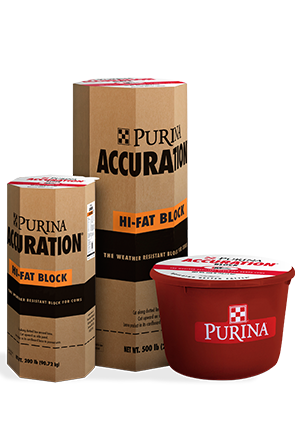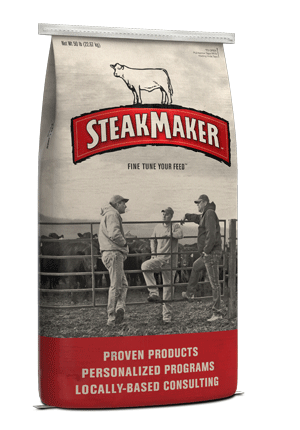
Five Things Cattle Producers Can Learn from Internal Parasites
Management : Cow & Calf
Management : Replacement
Nutrition : Forage
Did you ever think internal parasites could teach you something? Of course not. They steal performance and profit from your operation. However, as detrimental as they can be to your herd and your bottom line, there are things you can learn from them (along with strategies to ensure they don’t rob performance from your cattle).
Younger animals are most susceptible because they have a less developed immune system. If a young animal like a calf or yearling gets internal parasites, it’s even more detrimental in the long run. They won’t get the necessary nutrients they need for growth because the parasite thieves are stealing from them. Their body condition will suffer, too. That puts them at risk of having lower performance and not meeting their end goals.
Knowing your operation’s previous cattle deworming protocols, your local veterinarian can recommend which dewormers would do the most good.
Both under- and overdosing create internal parasite resistance, so a proper dose is paramount. Yes, that may mean an extra trip to the scale, but it will pay off in controlling parasites.
For cows that are harder to access, a feed-through is preferable to not deworming cattle at all. Talk with your local veterinarian to determine the best plan of action for your particular location.
Deworming cattle in the spring and the fall is recommended, though a mid-summer deworming could also help if your veterinarian says the situation calls for it. By deworming cattle at these times, you help ensure that you are providing the appropriate measures to treat for parasites when they could cause the most detriments.
This test will determine your area’s worm load and if your cattle deworming protocol is working. After using dewormers, perform a second test 14 days later. There should be a 90% reduction in worms if your cattle deworming protocol is working. The cost of the test is minimal compared to the pounds saved from less parasite load.
Does your cattle nutrition program stack up? Find out with a Proof Pays trial.
1. No matter your size, you can make a big impact
Internal parasites are an issue because they steal nutrients from their host and thus impact their growth and performance. They also suppress an animal’s appetite, affect reproductive performance, weaken the immune system and can even reduce carcass quality. While incredibly small, parasites can cause mighty subclinical damage.Younger animals are most susceptible because they have a less developed immune system. If a young animal like a calf or yearling gets internal parasites, it’s even more detrimental in the long run. They won’t get the necessary nutrients they need for growth because the parasite thieves are stealing from them. Their body condition will suffer, too. That puts them at risk of having lower performance and not meeting their end goals.
2. Be opportunistic
Parasites are opportunistic in that they only become active when the weather is ideal for them. Brown stomach worms can “arrest” in the body over the winter and become active when conditions are right. Parasites are small, microscopic creatures that seize opportunities and proliferate quickly.3. Be adaptive
Much to a cattle producer’s chagrin, internal parasites adapt and become resistant to treatment. If you’ve used the same cattle deworming medicine for the last 30 years, it’s likely not working anymore.Knowing your operation’s previous cattle deworming protocols, your local veterinarian can recommend which dewormers would do the most good.
Both under- and overdosing create internal parasite resistance, so a proper dose is paramount. Yes, that may mean an extra trip to the scale, but it will pay off in controlling parasites.
For cows that are harder to access, a feed-through is preferable to not deworming cattle at all. Talk with your local veterinarian to determine the best plan of action for your particular location.
Deworming cattle in the spring and the fall is recommended, though a mid-summer deworming could also help if your veterinarian says the situation calls for it. By deworming cattle at these times, you help ensure that you are providing the appropriate measures to treat for parasites when they could cause the most detriments.
4. Be mobile
As prolific as they are, thankfully, parasites are not upwardly mobile. They can’t climb above 4 inches of a blade of grass, so rotating pastures to give the grass rest and regrowth is a great strategy to prevent worm load. Cattle get internal parasites by ingesting them. Eggs shed in manure, hatch, develop into larvae and then the larvae get consumed with the grass. By avoiding overgrazing, you lessen the chance of cattle ingesting parasites.5. Subtle changes add up
Parasite damage is tricky to notice. It’s most apparent at weaning and harvest time, but the damage could also show up as poor conception rates or unthrifty calves. The best way to determine parasite load is to perform a fecal egg count reduction test. Most Extension services or pharmaceutical companies can analyze samples taken from your pasture.This test will determine your area’s worm load and if your cattle deworming protocol is working. After using dewormers, perform a second test 14 days later. There should be a 90% reduction in worms if your cattle deworming protocol is working. The cost of the test is minimal compared to the pounds saved from less parasite load.
Closing thoughts
Spring is a fulfilling and busy time of year for cattle operations. Deworming and performing fecal count egg reduction tests are worthwhile expenses to maintain productivity. And as a bonus, what you learn from the parasites can help you seize the day and keep the ranch going for future generations.Does your cattle nutrition program stack up? Find out with a Proof Pays trial.




